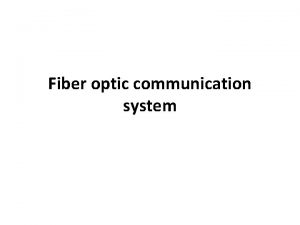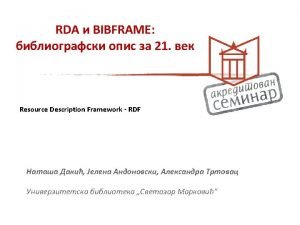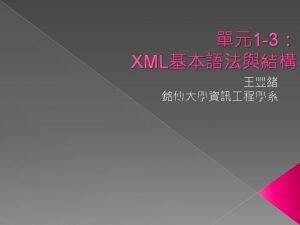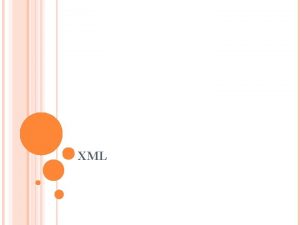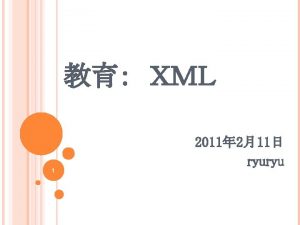XML Detector Description in Context XML Detector Description






- Slides: 6

XML Detector Description in Context XML Detector Description Workshop Geneva, Switzerland 14 April 2000 David Malon malon@anl. gov Argonne National Laboratory

Scope of Detector Description l l Encompasses the structure, composition, and timedependent state of the detector Includes: – – – – logical structure component identification physical geometry materials readout geometry alignment calibration and other time-varying conditions Does the XML effort need to address all of these? NO, but. . . Argonne National Laboratory

Scope of Detector Description l l l Overall detector description effort must address all of these points Role and boundaries of XML effort must be understood in this more general context Requirements and use cases must be understood – Example: One may say that detail filtering or parameterization is done at another level (e. g. , via a simulation-specific adapter whose source is (in ATLAS, anway) a generic model supported by a transient detector description store), BUT if XML is the data source, this job may be easy or hard, depending upon the DTD or schema Argonne National Laboratory

Example Detector Description WBS l l Requirements/scope Logical structure – hierarchical organization – component identification l Physical structure – physical geometry – material – alignment l Readout structure – readout geometry l Time-dependent state – calibration l . . . Argonne National Laboratory

XML Detector Description in ATLAS l l l Emphasis to date has been on XML for physical geometry and materials, with implicit support for generation of identifiers, and some logical structure implicit in name fields XML could, of course, be used more systematically for logical detector description Currently overlaps several areas without ultimate responsibility for supporting those areas Argonne National Laboratory

Questions l l Should we use XML for description of LOGICAL structure? Is it an explicit requirement that component identifiers be generatable from the XML source? How can we assess whether physical geometry description is adequate and appropriate for simulation use cases? How are physical and readout geometries related, and what is the role of XML in defining or supporting that relationship? Argonne National Laboratory




